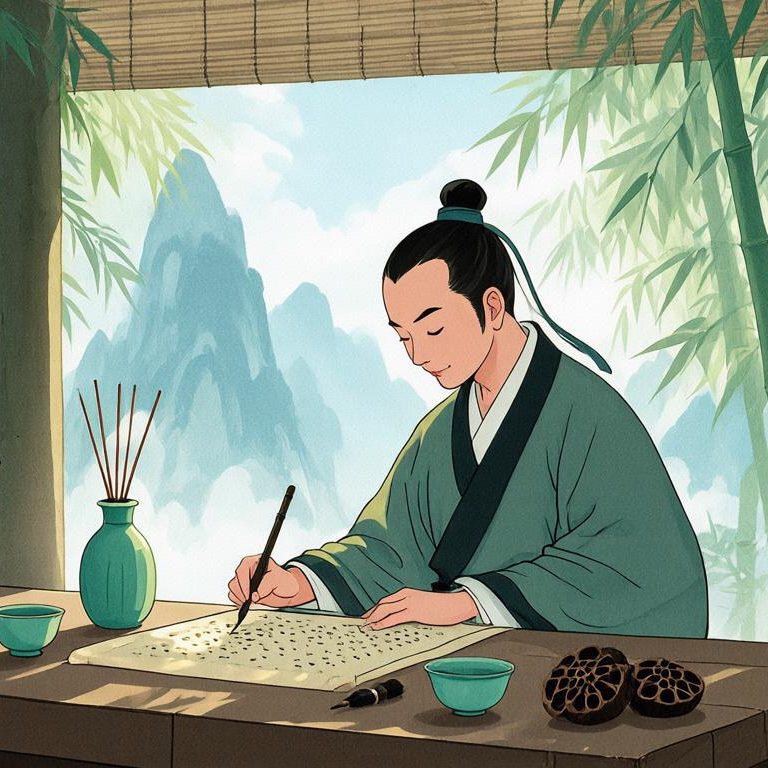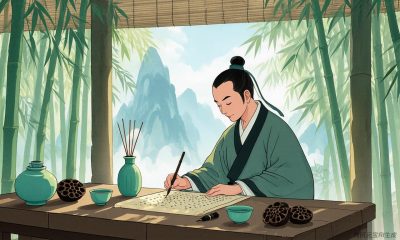Whispers of Serenity: The Ancient Path of Chinese Monks and Their Timeless Influence

The winds whistle across the vast Taklamakan desert. Beneath the relentless sun, a lone figure moves steadily, robes caked with dust, eyes fixed on a distant horizon beyond the shimmering haze. This isn’t just any traveler; this is a Chinese Buddhist monk, perhaps centuries ago, embarking on one of the most incredible journeys of intellectual and spiritual exchange the world has ever known. His story, and the story of countless like him, isn’t confined to dusty scrolls – it resonates subtly in the design, craftsmanship, and quiet spirit of many beautiful “Made in China” treasures finding their way into global homes today. So, let’s step onto the path and discover the fascinating origins and enduring legacy of these figures of tranquility: the Chinese Buddhist monk, or ‘和尚’ (Héshàng).
Seeds from Afar: Buddhism Reaches the Middle Kingdom
Our story begins far outside China. Around the 1st century CE (possibly earlier), whispers of a profound new teaching began to trickle along the burgeoning Silk Road from India. This was Buddhism. Merchants, diplomats, and travelers carried not only silk and spices but also revolutionary ideas about ending suffering, achieving enlightenment, and living a compassionate life.
Initially, encountering China’s deeply established philosophies like Confucianism and Daoism, Buddhism faced skepticism. How could these foreign monks, with their shaved heads and saffron robes, chanting in unfamiliar tongues, contribute to the Middle Kingdom? They were sometimes seen as exotic oddities, practicing strange rituals. Early translations of Buddhist texts were clunky, struggling to capture complex Sanskrit terms within existing Chinese concepts. Yet, the core message – compassion, inner peace, liberation from worldly suffering – held a universal appeal.

The Monk Steps Forward: Translators, Pilgrims, and Scholars
The story of Buddhism becoming Chinese is inseparable from the tireless work of the monks themselves. They were the bridge-builders.
-
The Translators: Imagine monks like Kumarajiva (344–413 CE) or the legendary Xuanzang (602–664 CE). They weren’t just religious figures; they were brilliant linguists and cultural diplomats. Xuanzang’s incredible 17-year pilgrimage to India (against imperial orders!) is an epic tale in its own right. He faced bandits, crossed treacherous mountains, and studied at the great monastic university of Nalanda. His return, laden with hundreds of priceless Sanskrit scriptures, led to some of the most influential and elegant translations, making Buddhist philosophy accessible and deeply resonant in Chinese thought. Monasteries became hubs of intellectual activity, preserving and expanding knowledge.
-
The Innovators: Monks also played a crucial role in adapting Buddhism. Figures like Huineng (638–713 CE), the Sixth Patriarch of Chan (Zen) Buddhism, emphasized direct insight over complex ritual and study, making enlightenment seem attainable for anyone, anywhere. This pragmatic approach resonated deeply with Chinese sensibilities and profoundly influenced philosophy, arts, and aesthetics. The iconic Tang dynasty monk Jigong (济公), though partially folkloric, embodies the image of the eccentric, compassionate monk whose wisdom transcends conventional rules.
From Monastery to Mainstream: Monks Shaping Culture
Over centuries, through the dedicated work of countless monks translating, teaching, and living the Dharma, Buddhism became woven into the very fabric of Chinese civilization:
-
Art & Architecture: Iconic pagodas, serene temple complexes blending with nature, intricate grottoes like Longmen and Yungang filled with exquisite Buddha statues – these are all testaments to Buddhist aesthetics channeled through Chinese artisanship. Monks often oversaw or inspired their creation.
-
Philosophy & Mindset: Concepts like karma, mindfulness in everyday activities, the pursuit of inner peace, and a deep appreciation for nature became deeply embedded. The concept of ‘Zen’ emerged, influencing everything from calligraphy and painting to garden design.
-
Daily Life: Even for non-Buddhists, the presence of monks and temples offered centers of community gathering, festivals, education, and solace. Meditation, ethical conduct, and compassion became widely admired virtues.

Echoes in Modern Exports: Carrying the Monastic Spirit
Now, step into a modern home anywhere in the world. Look closely at some of those beautifully crafted pieces labelled “Made in China” that evoke a sense of tranquility. Do you see the subtle lineage?
-
The Spirit of Zen: Minimalist ceramic tea sets? They echo the mindful tea ceremonies practiced in temples for centuries. The clean lines, the focus on the present moment during preparation – that’s the spirit of monks like Huineng seeking simplicity and direct experience. A plain ceramic bowl used decoratively? Think of the monk’s alms bowl, valued for its humility and utility.
-
Art Inspired by Stillness: Prints featuring misty mountains, a lone meditating figure, or abstract brushstrokes? They draw on traditions perfected by monks and artists steeped in Buddhist contemplation, capturing the essence of nature’s impermanence and inner calm.
-
Handicrafts & Ambiance: Elaborately carved wooden incense burners? They invoke temple rituals where fragrance symbolizes purity and mindfulness. Meditation cushions? They directly link to the monks’ core practice of cultivating inner stillness. Textiles with simple, natural weaves? They recall the humble robes, valuing comfort, practicality, and non-attachment.
-
The Resonance: Owning a piece like this isn’t just about decoration. It’s about connecting with an ancient aesthetic born from profound introspection. It’s inviting a whisper of that monastic serenity – a focus on peace, balance, mindful appreciation, and timeless craftsmanship – into your daily life.


This Chan-inspired tea set has transformed my mornings into sacred rituals. Pouring from its unglazed clay pot feels like communing with ancient monks – you can almost hear Xuanzang’s footsteps along the Silk Road. The blog’s tales of desert-crossing translators gave me chills; suddenly my teacup holds millennia of spiritual exchange.
The minimalist design embodies Huineng’s wisdom: no ornate distractions, just perfect weight and balance. When steam rises from the celadon cup, I practice their ‘ordinary mind’ teaching – finding nirvana in steam patterns and quiet sips. It arrived nestled in raw hemp, echoing monastic simplicity.
More than pottery, it’s a mindfulness tool. Guests instinctively lower their voices around it, drawn by its serene energy. The craftsmanship honors temple traditions – slight imperfections whisper of Jigong’s eccentric compassion.
For seekers of stillness in modern chaos, this collection bridges centuries. You’re not brewing tea; you’re steeping in the resilience of robed pilgrims who carried Dharma through dust storms. Profound beauty that turns daily rituals into pilgrimages.